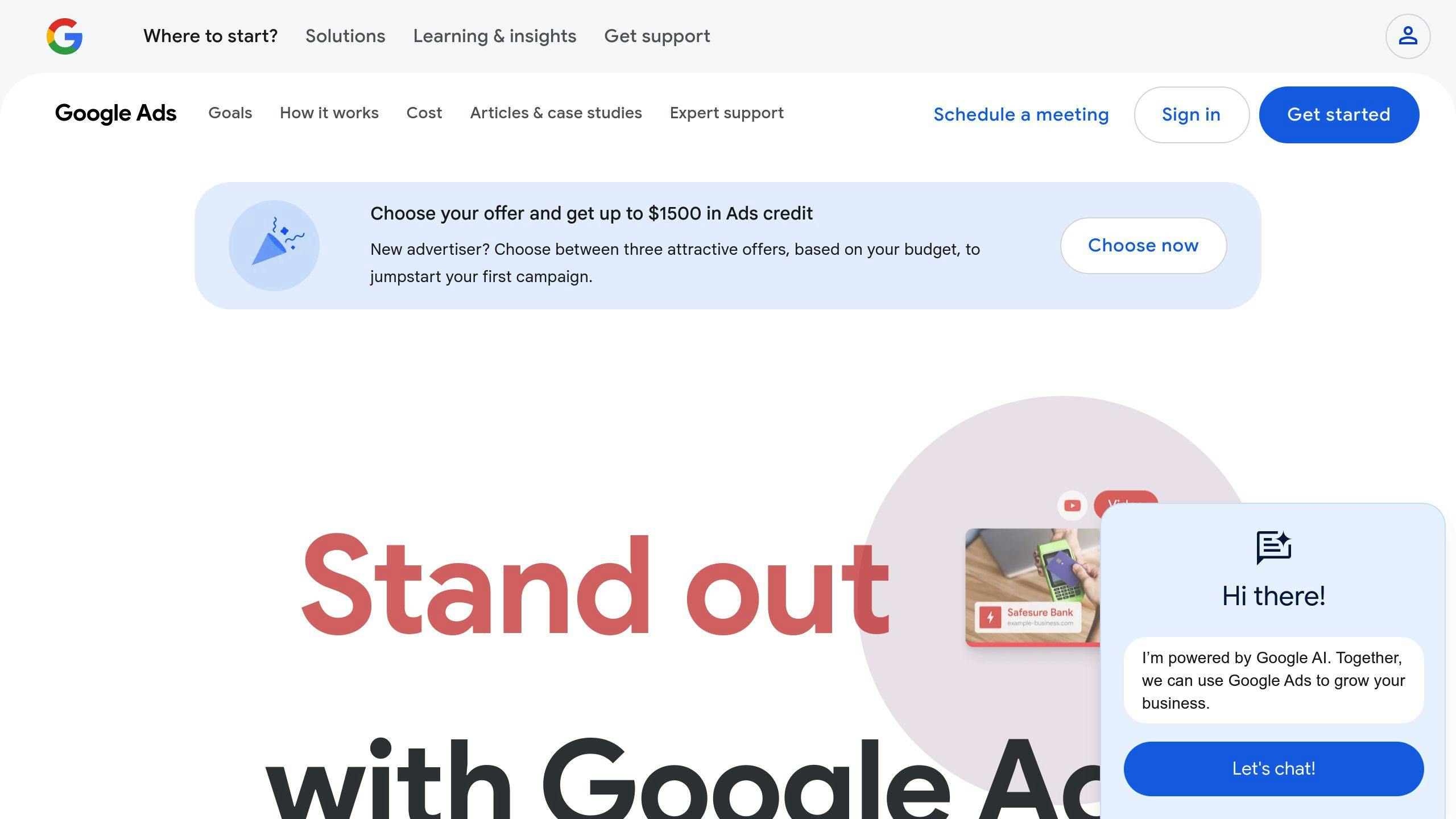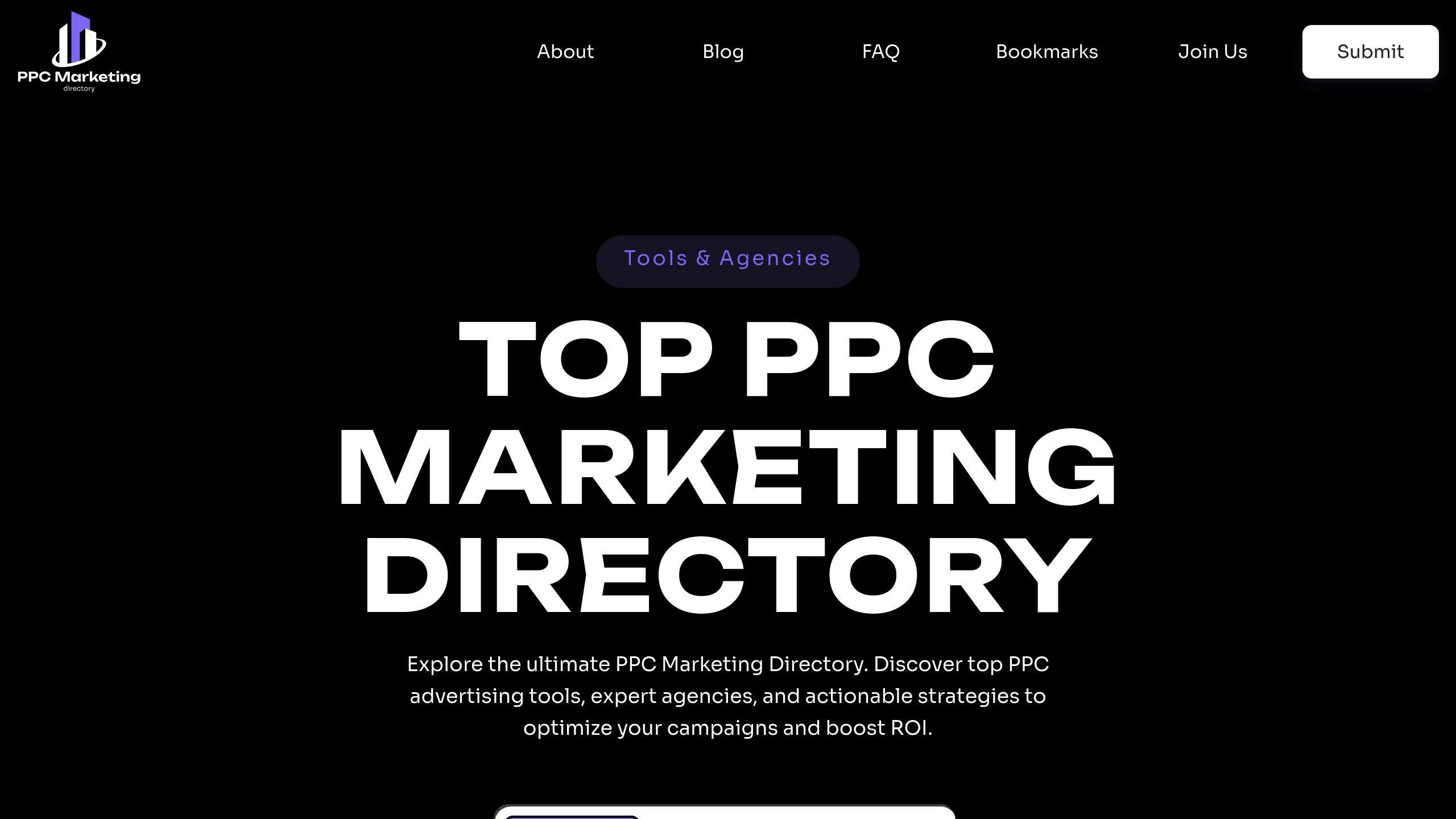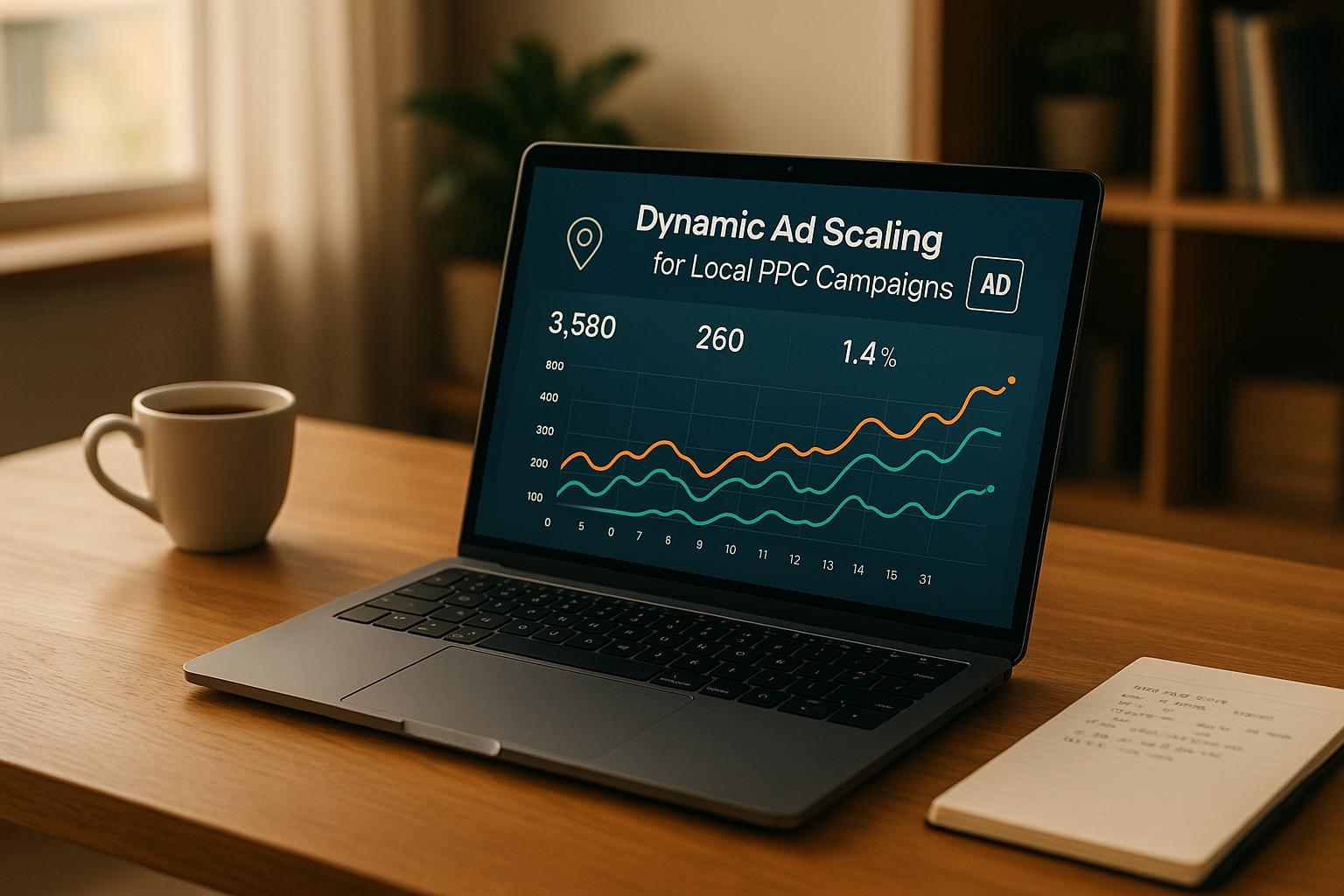Want better results from your PPC campaigns? Use this ad copy review checklist to ensure clarity, relevance, and performance. Here's how it helps:
- Align Ad Copy with Goals: Match your copy to lead generation, sales, or brand awareness objectives.
- Spot Common Issues: Fix unclear language, misaligned goals, poor keyword usage, or technical errors.
- Optimize Calls-to-Action (CTAs): Use specific, action-driven CTAs like "Get Your Free SEO Audit."
- Maintain Brand Voice: Stay consistent while tailoring your tone for different audiences.
- Follow Technical Rules: Adhere to character limits, grammar standards, and formatting guidelines.
Quick Tips for Success:
- Use relevant keywords naturally.
- Check metrics like CTR, conversion rates, and Quality Scores weekly.
- Leverage ad extensions for extra value.
This guide covers every step to refine your ad copy and boost PPC performance.
9 Google Ads Ad Copy Tips to Improve Your Conversion Rate

Ensuring Clarity and Relevance in Ad Copy
Clarity and relevance are the backbone of effective PPC ad copy. These elements should be your main focus during the review process.
Matching Ad Copy to Campaign Goals
Your ad copy should align closely with your campaign's objective. For example, if you're aiming to generate leads, highlight incentives like free resources. If the goal is direct sales, emphasize product features and benefits.
| Campaign Goal | Ad Copy Focus | Example Approach |
|---|---|---|
| Lead Generation | Value Proposition | Offer free resources, consultations, or downloads |
| Direct Sales | Product Benefits | Showcase pricing, features, and immediate value |
| Brand Awareness | Unique Selling Points | Highlight what makes your brand stand out |
Incorporating Keywords Effectively
Keywords should blend seamlessly into your ad copy without compromising readability. Dynamic keyword insertion can help, but use it carefully to avoid awkward phrasing.
"Advertisements that proclaim, 'satisfaction guaranteed' are fairly common–and that's the problem. The statement can come across as just another hollow promise, because it often is." - Brian Clark, Copyblogger [2]
Vague promises like "satisfaction guaranteed" often fall flat because they lack substance. Instead, focus on specific, meaningful benefits that connect with your audience.
Optimizing Call-to-Action
A strong call-to-action (CTA) is what turns interest into action. Here are some effective strategies:
- Be specific and value-driven: Swap generic phrases like "Learn More" for something like "Get Your Free SEO Audit."
- Create urgency and highlight benefits: Use time-sensitive CTAs such as "Claim Your Discount Today."
For the best results, make sure your CTA matches the ad copy's message and the landing page experience. Consistency builds trust and boosts conversions.
Once your ad copy is clear, relevant, and action-oriented, focus on ensuring it reflects your brand's unique voice and tone.
Maintaining Brand Voice and Tone
Your brand voice is the personality that defines your PPC ad campaigns. Nailing it means crafting ads that not only attract clicks but also build meaningful connections with your audience.
Sticking to Brand Guidelines
Consistent branding in PPC campaigns can significantly increase both visibility and revenue. A centralized style guide is a great way to ensure your ad copy reflects your brand's personality, approved language, and writing style.
"A clear, recognizable brand voice is essential for building lasting customer relationships." - Grammarly Business
While keeping a consistent voice is crucial, it's just as important to adjust your messaging to connect with different audience segments.
Adjusting for the Target Audience
Shaping your brand voice to fit various audience groups helps your message stay relevant without losing its core identity. Focus on understanding what your audience values while staying true to your brand.
Here are some tips for effective audience targeting:
- Learn about your audience’s needs and preferences.
- Use A/B testing to see which tone works best.
- Monitor metrics like click-through and conversion rates to measure success.
sbb-itb-89b8f36
Technical Aspects of Ad Copy
Getting the technical details right in your ad copy is crucial for meeting platform rules and maintaining a professional tone.
Adhering to Character Limits
Google Ads has strict character limits for various ad elements. Here's a quick reference:
| Ad Element | Character Limit |
|---|---|
| Headlines | 30 characters |
| Descriptions | 90 characters |
| Display URL Path | 15 characters |
| Sitelink Title | 25 characters |
| Callout Text | 25 characters |
To make the most of these limits, focus on clear and impactful language. Cut out unnecessary words and ensure every character contributes to your message.
Correct Grammar and Punctuation
Grammar mistakes can hurt your ad's credibility and turn users away. In fact, 59% of users say poor grammar negatively impacts their trust in a site [1].
Key areas to check:
- Punctuation: Ensure it's properly placed and consistent.
- Capitalization: Use correct and consistent capitalization.
- Word Choice: Watch out for common errors like "affect" vs. "effect."
- Formatting: Stick to a clean and professional style.
Using Ad Extensions
Ad extensions give users more information and options, improving visibility and click-through rates. Here's a breakdown of some popular extensions:
| Extension Type | Purpose | Character Limit |
|---|---|---|
| Sitelinks | Links to additional pages | 25 per link |
| Callouts | Highlight key features | 25 per callout |
| Structured Snippets | Show product/service details | 25 per value |
| Price Extensions | Display pricing info | 25 per header |
Extensions should add extra value to your ad, not repeat what's already in the main copy.
Once these technical elements are fine-tuned, you can focus on analyzing performance metrics to see how well your ad copy is working.
Analyzing Ad Copy Performance
Once your ad copy meets the technical requirements, the next step is to dive into performance metrics. This ensures your ads are not just running but delivering results.
Reviewing Click-Through Rates
Click-through rate (CTR) is a key metric for evaluating how well your ad resonates with your audience. Here's a simple framework to guide your analysis:
| Performance Level | CTR Range | Action Required |
|---|---|---|
| Strong | Above industry average | Keep monitoring and maintain performance |
| Moderate | Near industry average | Experiment with new variations |
| Poor | Below industry average | Make immediate adjustments |
Assessing Conversion Rates and ROI
Beyond CTR, it's crucial to look at conversion rates, return on investment (ROI), and cost-per-click (CPC). Break this analysis down by ad group and individual ads. This deeper dive helps pinpoint what’s working and what needs improvement.
"Using a call to action in Google ad copy helps frame the visitor experience. It can operate similarly to the prequalifying ad copy mentioned in the next section. Once they understand what you want them to do, it can help weed out people who aren't interested." [2]
Impact on Quality Score
Your Quality Score is directly tied to how relevant and consistent your ad copy is. Aligning your keywords, ad messaging, and landing pages can improve this score. A higher Quality Score not only boosts your ad rank but also lowers CPC.
Key factors influencing Quality Score include:
- Keyword relevance within your ad copy
- Message alignment between ads and landing pages
- Historical CTR trends that impact rankings
Make it a habit to review these metrics weekly. Regular analysis helps you spot areas for improvement and make the most of your optimization tools and strategies.
Top PPC Marketing Directory

The Top PPC Marketing Directory is a go-to resource for refining your ad copy review process. By using the tools and services listed, you can address any gaps uncovered during ad copy audits and improve overall campaign performance.
How the Directory Helps with Ad Copy Improvements
This directory links marketers with tools and services that boost PPC campaign results. Here's what you'll find:
- Ad Copy Tools: Enhance relevance and click-through rates (CTR) with keyword research and dynamic insertion features.
- Testing Platforms: Run A/B tests and track performance to fine-tune your ads.
- Expert Services: Access professional help for reviewing ad copy and managing campaigns.
- Analytics Solutions: Keep tabs on ROI and monitor Quality Scores effectively.
Each listing is categorized to fit specific campaign requirements, offering detailed profiles to guide your choices. Whether you need tools for managing campaigns, monitoring metrics, or specialized services for improving ad copy and aligning landing pages, this directory makes it easy to find the right fit.
Campaign management tools ensure your ad variations stay consistent, while expert services zero in on key areas like:
- Ad copy refinement and testing
- Aligning landing pages with ad messaging
- Improving Quality Scores
- Maintaining a consistent brand voice
Conclusion and Action Plan
Key Takeaways from the Checklist
Running effective PPC campaigns hinges on two things: keeping your ads relevant and consistently tracking performance. Your ad copy should match your campaign's goals while staying true to your brand's voice. Regularly monitor metrics like CTR (click-through rate) and Quality Score to ensure your ads are on track. Also, make sure your ad copy aligns with both keywords and landing pages to improve relevance and boost Quality Scores.
To stay on top of these priorities, set up a structured process for reviewing and optimizing your ads.
How to Set Up a Review Process
A regular review schedule can keep your ads performing at their peak. Here's a simple framework to help you apply the checklist effectively:
| Review Frequency | Focus Areas | Key Metrics |
|---|---|---|
| Weekly/Bi-weekly | Ad relevance, CTR trends, Keyword performance, CTA effectiveness | Click-through rates, Conversion rates, Quality Score |
| Monthly | Brand voice consistency, Competition analysis | ROI, Market position |
Start by auditing your current ad copy based on the checklist. Use tools from the PPC Marketing Directory to simplify tracking and measure progress. Establish baseline metrics to evaluate how well your campaigns improve over time.
Keep detailed records of changes and results. This will help you pinpoint what works and guide future updates. If you notice underperforming ads, focus on fixing the most critical elements first - usually relevance and the effectiveness of your call-to-action.
To ensure long-term success, make this review process part of your overall campaign management strategy. This way, your ad messaging stays aligned with your marketing goals while meeting the technical standards needed for top-performing PPC campaigns.


